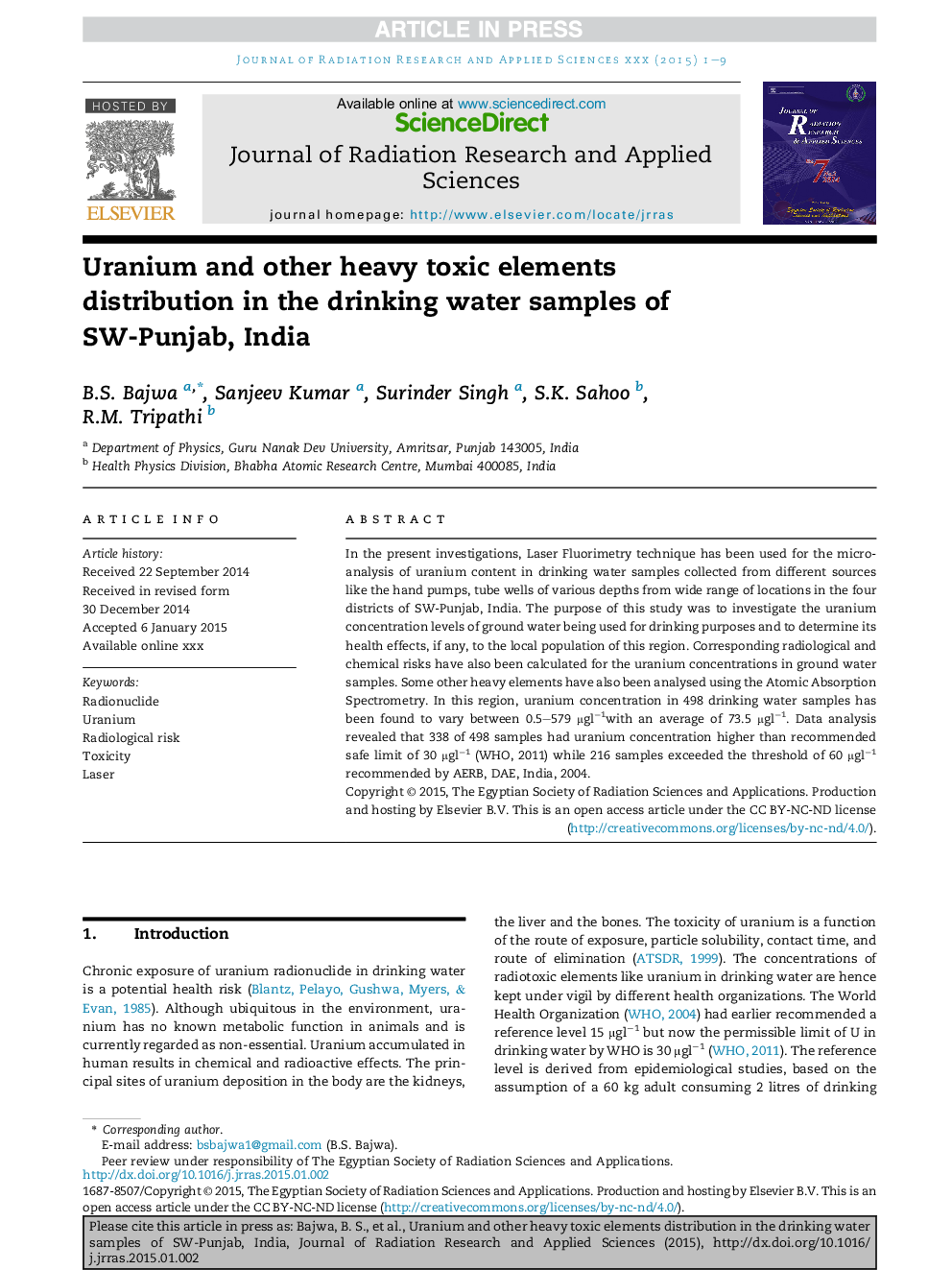| Article ID | Journal | Published Year | Pages | File Type |
|---|---|---|---|---|
| 5454506 | Journal of Radiation Research and Applied Sciences | 2017 | 9 Pages |
Abstract
In the present investigations, Laser Fluorimetry technique has been used for the microanalysis of uranium content in drinking water samples collected from different sources like the hand pumps, tube wells of various depths from wide range of locations in the four districts of SW-Punjab, India. The purpose of this study was to investigate the uranium concentration levels of ground water being used for drinking purposes and to determine its health effects, if any, to the local population of this region. Corresponding radiological and chemical risks have also been calculated for the uranium concentrations in ground water samples. Some other heavy elements have also been analysed using the Atomic Absorption Spectrometry. In this region, uranium concentration in 498 drinking water samples has been found to vary between 0.5-579 μglâ1with an average of 73.5 μglâ1. Data analysis revealed that 338 of 498 samples had uranium concentration higher than recommended safe limit of 30 μglâ1 (WHO, 2011) while 216 samples exceeded the threshold of 60 μglâ1 recommended by AERB, DAE, India, 2004.
Related Topics
Physical Sciences and Engineering
Materials Science
Materials Science (General)
Authors
B.S. Bajwa, Sanjeev Kumar, Surinder Singh, S.K. Sahoo, R.M. Tripathi,
